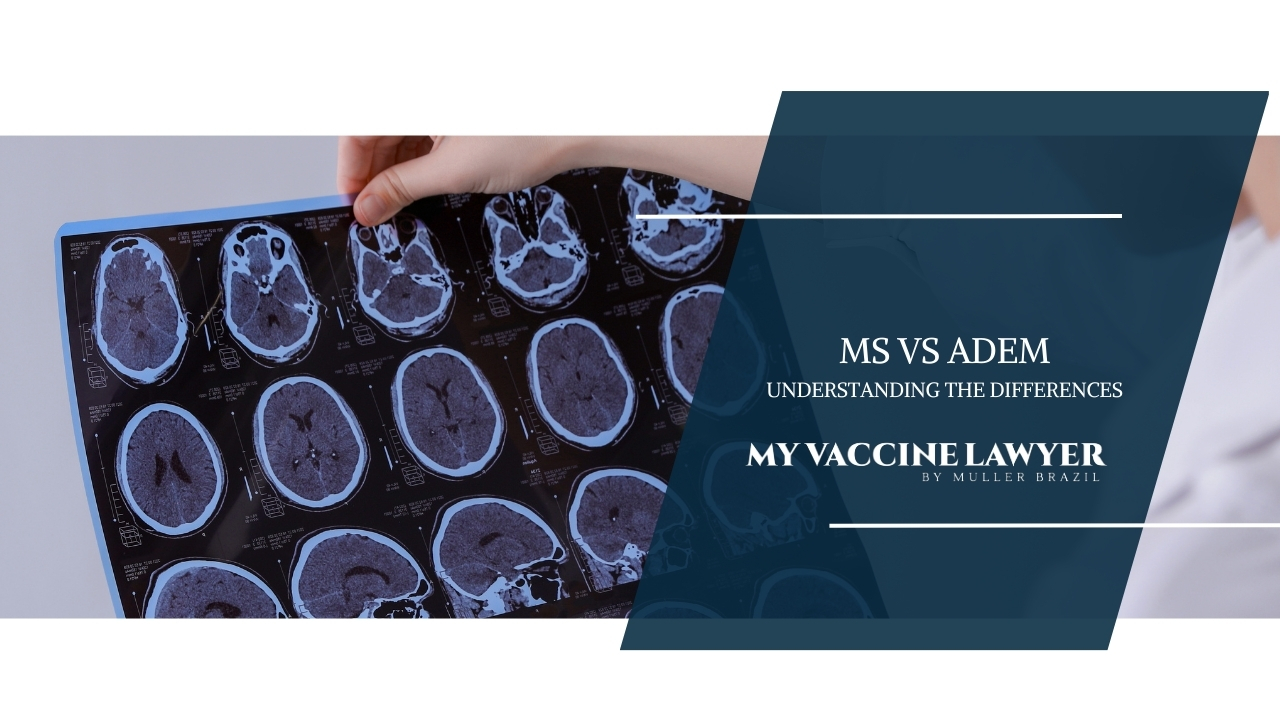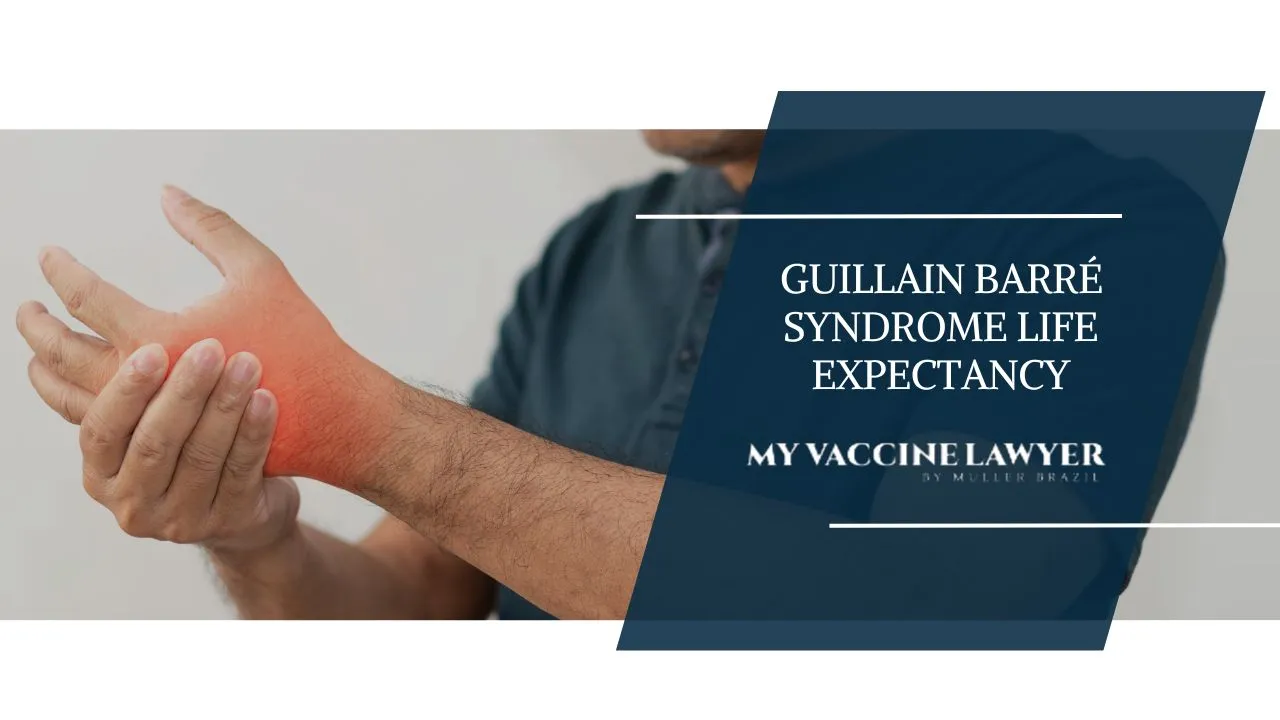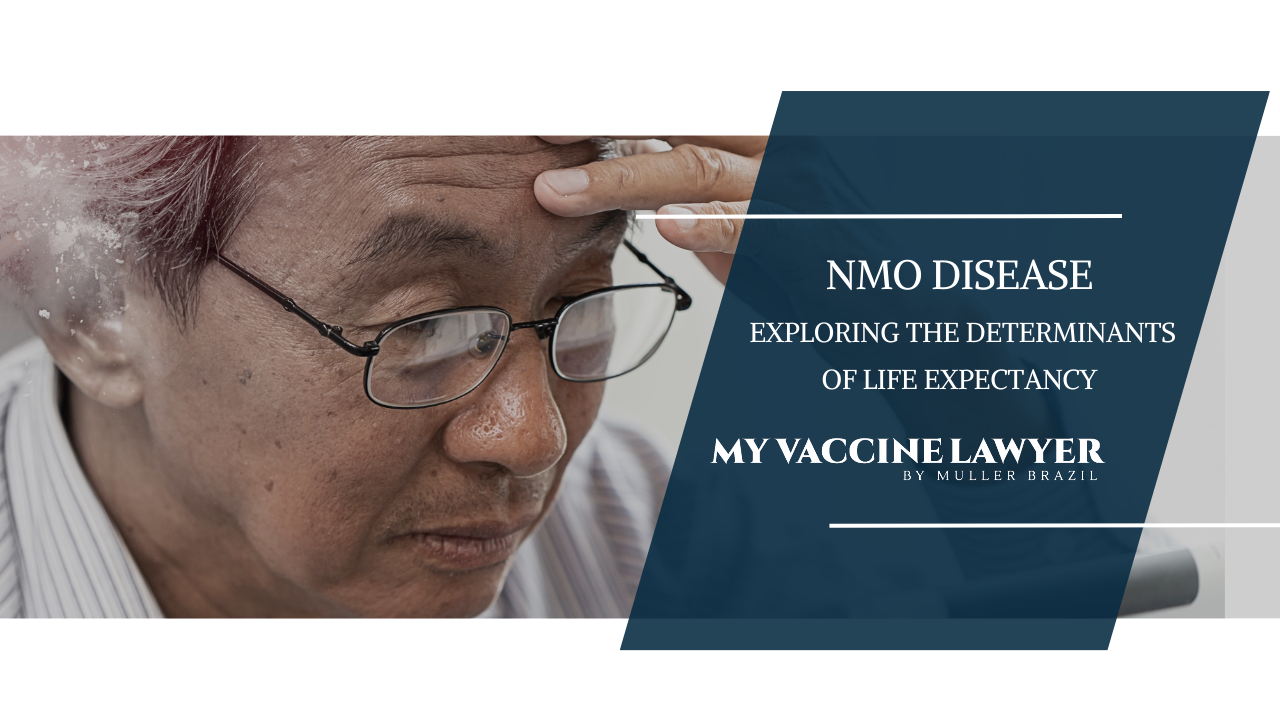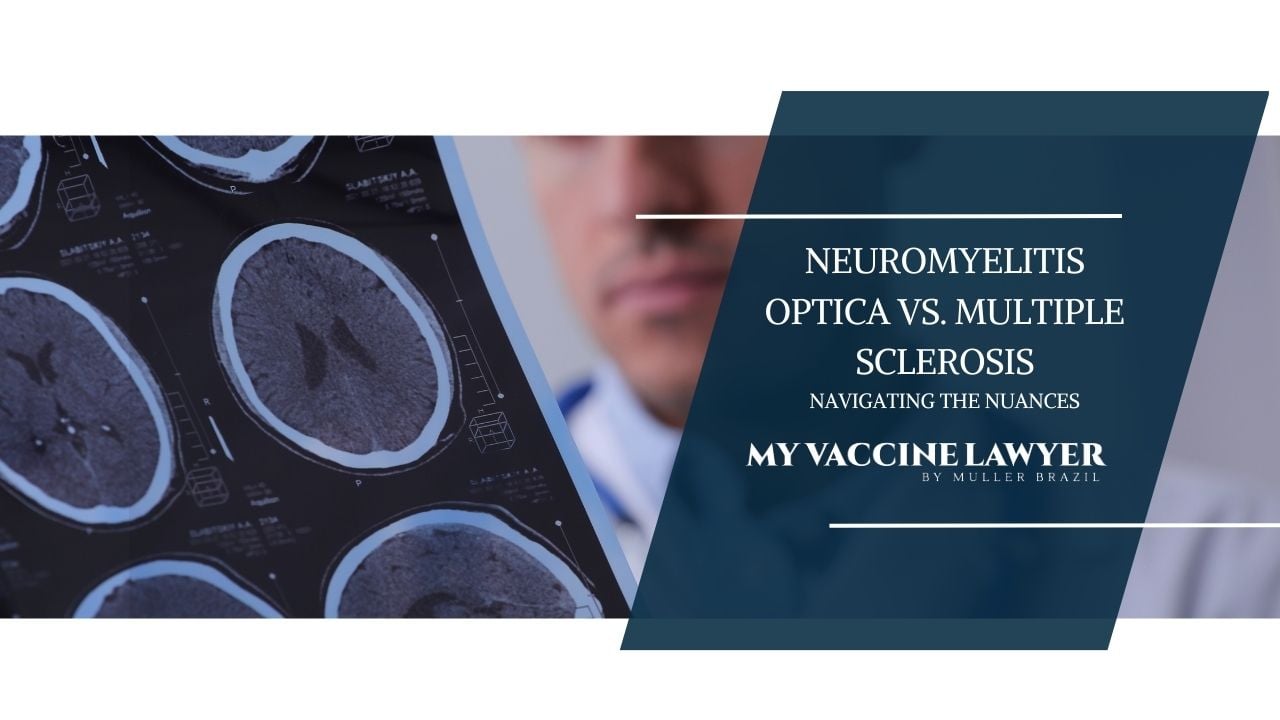9 min read
NMO Disease Life Expectancy: Key Factors and Insights
Vaccine Injury Law Resources / Max Muller / NMO Disease Life Expectancy: Key Factors and Insights
 Max Muller
:
Dec 14, 2023 11:48:00 PM
Max Muller
:
Dec 14, 2023 11:48:00 PM
Understanding the factors influencing life expectancy for those with this Neuromyelitis Optica (NMO) is essential in providing the best possible care and support.
This blog post provides an in-depth overview of NMO disease life expectancy, exploring factors such as early diagnosis, treatment, disease progression and relapse frequency, demographic and genetic factors, and more. By understanding NMO better, we can work together to improve the lives of those affected by this challenging condition.
Key Takeaways
- NMO Disease Life Expectancy is affected by early diagnosis, treatment, disease progression and relapse frequency, and demographic/genetic factors.
- Effective management of NMO through immunosuppressive therapies, lifestyle modifications, and support systems significantly improves life expectancy for those with the condition.
- Real-life experiences demonstrate the importance of early diagnosis, effective treatment, and strong support systems in managing NMO to provide hope & improved quality of life for patients.
NMO Disease Life Expectancy Factors
Neuromyelitis optica spectrum disorders (NMOSD)are chronic autoimmune disorders that affect the central nervous system. It is also known as Devic’s disease and impacts the optic nerves, specifically the optic nerve and spinal cord.
Optic neuritis, a common symptom of NMOSD, causes inflammation and damage to the optic nerves. The life expectancy of NMO patients vary significantly, influenced by factors such as:
- Early diagnosis
- Treatment
- Disease progression
- Relapse frequency
- Demographic and genetic factors
In recent years, research and treatment development has led to a better understanding of NMO, which has improved many patients' life expectancies. Understanding NMO disease life expectancy involves examining several key factors. These include the importance of early diagnosis and treatment, the rate of disease progression and frequency of relapses, and the role of demographic and genetic factors.
Early Diagnosis and Treatment
Timely diagnosis and treatment of NMO are essential for reducing the severity and distinguishing it from multiple sclerosis (MS), as well as for reducing the mortality rate.
Diagnostic tests used for the early detection of NMO disease include neurological exams, MRI scans, and blood tests to detect AQP4 or MOG antibodies. Early diagnosis and treatment of NMOSD may positively influence the prognosis of the disease, as they help reduce NMO symptoms and prevent further damage.
Precisely distinguishing NMOSD from multiple sclerosis (MS) is important. The disease-modifying therapies usually employed to treat MS may have potentially harmful effects on the progression of NMOSD. Highlighting the importance of early diagnosis and treatment paves the way for better management of NMOSD and a potential increase in life expectancy.
Disease Progression and Relapse Frequency
The disease progression and frequency of relapses influence the life expectancy of NMO patients. It has been observed that:
- A higher frequency of attacks is linked to a reduced life expectancy.
- Frequent attacks reduce life expectancy when they affect the brainstem or cause damage to the medulla, thus increasing the risk of respiratory failure.
- About 22% of individuals diagnosed with the dominant AQP4-positive NMOSD subtype need a mobility aid within five years of the disease onset.
Recuperation from relapses can also affect mortality rates. Proper management of NMO disease includes addressing the risk factors and consequences of the relapsing form and making sure of timely interventions to minimize their impact on life expectancy.
Demographic and Genetic Factors
Demographic and genetic factors, such as age at onset, ethnicity, and biological sex, affect NMO disease life expectancy. Some key factors to consider are:
- Late-onset, which occurs in patients over 50 years of age, is associated with increased motor disability and potentially higher mortality rates.
- NMO has been observed to occur across all ages, with a higher number in women than men.
- NMO is also seen more in people of Asian and African origin than in Caucasians.
These factors can play a role in determining the life expectancy of individuals with NMO.
It has been observed that individuals of African ancestry have a considerably higher mortality rate. Biological sex can also impact life expectancy, with NMOSD being more frequently observed in women. Understanding how demographic and genetic factors affect life expectancy allows for more personalized interventions and support strategies for individuals with NMO.
Comparing NMO and Multiple Sclerosis Life Expectancies
While NMO and multiple sclerosis (MS) share similarities in symptoms and challenges, they differ in disease course and prognosis. Here are some key differences between the two conditions:
- NMO primarily targets the eyes and the spinal cord, while MS impacts the central nervous system.
- NMO generally has a more severe disease course compared to MS.
- NMO patients often experience a more aggressive disease course than MS patients, which can impact life expectancy.
Comparing the life expectancies of NMO vs multiple sclerosis patients offers meaningful perspectives on the distinct challenges experienced by individuals living with these separate autoimmune disorders.
The upcoming sections will detail the similarities and differences in symptoms, challenges, disease courses, and prognoses between NMO and multiple sclerosis.
Similarities in Symptoms and Challenges
Both NMO and multiple sclerosis present with similar symptoms, but NMO is typically characterized by more severe symptoms and can lead to significant disability. Common severe symptoms shared between the two conditions include vision impairments, debility or paralysis of extremities, and numbness or tingling sensations. However, NMO attacks are typically more severe than MS attacks, particularly in the initial stages of the disease.
Individuals living with NMO and multiple sclerosis both face daily challenges such as:
- depression
- anxiety
- visual impairment
- weakness
- paralysis
- bowel and bladder control issues
- urinary retention
- sensory impairment
Acknowledging these common challenges is important to develop specific interventions and support strategies, improving the quality of life for patients with both conditions.
Differences in Disease Course and Prognosis
The disease course between NMO and multiple sclerosis varies significantly. NMO is characterized by longitudinally extensive transverse myelitis (inflammation of the spinal cord) with a tendency for the cervical cord, whereas MS is more of a demyelinating disease. Furthermore, the treatments for these conditions differ, with NMO requiring distinct therapeutic interventions compared to MS.
Differences in disease course and prognosis between NMO and multiple sclerosis impact life expectancy, with NMO patients often experiencing a more aggressive disease course. The average life expectancy for patients with NMO is approximately 5 years following the initial attack if left untreated; however, with treatment, outcomes are substantially improved.
Conversely, MS generally does not affect life expectancy, highlighting the distinctions between these two autoimmune disorders.
NMO Disease Management and Its Impact on Life Expectancy
Proper management of NMO, including therapies, lifestyle changes, and support, improves patient health and life expectancy. By addressing the unique challenges faced by those living with NMO, including the debilitating symptoms and recurrent attacks, we can improve the quality of life for affected individuals.
The upcoming parts will cover the different aspects of NMO disease management and their influence on life expectancy, including:
- The role of immunosuppressive therapies
- The significance of lifestyle changes and coping strategies
- The contribution of support systems and mental health care for NMO patients
Immunosuppressive Therapies
Immunosuppressive therapies help reduce the risk of recurrence and induce remission in NMO patients, ultimately impacting disability and death. These therapies suppress the immune system’s activity, diminish inflammation, and prevent attacks. Examples of immunosuppressive therapies for NMO include:
- Azathioprine
- Rituximab
- Mycophenolate
- Methotrexate
The success rates of FDA-approved medications for NMO vary depending on the specific medication. For instance, treatment with Soliris (eculizumab) reduced the number of NMOSD relapses by 94 percent over a 48-week period. Using immunosuppressive therapies can improve the prognosis for NMO patients and increase their life expectancy.
Lifestyle Adjustments and Coping Strategies
Lifestyle adjustments and coping strategies, such as maintaining a healthy diet and exercise routine, help NMO patients manage their symptoms and improve their quality of life. A balanced diet that includes a variety of fruits, vegetables, whole grains, and lean protein benefits NMO patients. Doing regular exercise and physical therapy also strengthens muscles and increases energy levels.
In addition to physical well-being, mental health is essential to managing NMO disease. Some healthy coping methods that help patients navigate the emotional challenges associated with living with NMO include:
- Meditation
- Deep breathing
- Exercise
- Socializing
These practices contribute to overall well-being and improve the quality of life for individuals with NMO.
These lifestyle modifications and coping strategies enable NMO patients to manage their symptoms more effectively and improve their overall quality of life.
Take Control of Your Injury Today
Support Systems and Mental Health
Support systems and mental health care are essential for NMO patients, as they help address the emotional challenges associated with the disease and improve overall well-being. Support systems offer emotional support, education, and resources to those with NMO, aiding them in facing the difficulties of the disease. These systems also enable access to proper medical care and treatment, which help manage symptoms and stop the disease from developing.
Furthermore, support systems link individuals with NMO to a community of others who understand their circumstances. This can give individuals a sense of belonging and minimize feelings of isolation.
In sum, support systems improve disease management and quality of life for those with NMO, positively influencing life expectancy.
Recent Advances in NMO Disease Research and Treatment
Recent advances in NMO disease research and treatment, including FDA-approved medications and emerging therapies, show promise in improving life expectancy for NMO patients. These new therapies target specific elements of the autoimmune cascade, reducing relapse rates and improving clinical symptoms for many patients. This ultimately minimizes the impact of an NMO attack.
The upcoming subsections will detail the recent NMO disease research and treatment progress. We will focus on FDA-approved medications, their efficacy in preventing future attacks, and the potential of emerging therapies and clinical trials to further improve life expectancy and quality of life for NMO patients.
FDA-Approved Medications
New FDA-approved medications for NMO target specific elements of the autoimmune cascade and have shown great success, particularly in AQP4-seropositive patients. The FDA has approved Soliris (eculizumab), Enspryng (satralizumab-mwge), and Uplizna (inebilizumab-cdon) for NMO disease.
These medications function by inhibiting the complement system, specifically the C5 complement protein, reducing the inflammatory response and damage caused by the autoimmune cascade in NMO.
Studies have demonstrated that treatment with Soliris (eculizumab) reduced the number of NMOSD relapses by 94 percent over 48 weeks. These FDA-approved medications offer new treatment options for NMO patients, providing hope and improved outcomes for those living with this challenging condition.
Emerging Therapies and Clinical Trials
Emerging therapies and clinical trials are exploring novel approaches to NMO treatment, with the potential to further improve life expectancy and quality of life for patients. Some of the most promising emerging therapies for NMO disease include:
- Rituximab
- Eculizumab
- Satralizumab
- Inebilizumab
These therapies operate through various mechanisms, such as inhibiting the complement system and targeting specific receptors. These receptors suppress the immune system response and reduce inflammation in NMO when immune system attacks occur.
Several clinical trials are currently being conducted for NMO treatment, including the N-MOmentum trial evaluating inebilizumab, the CHAMPION-NMOSD trial evaluating Ultomiris, and the satralizumab trial. Participation in clinical trials allows NMO patients to contribute to creating newer, more effective treatments and helps in advancing our understanding of this complex disease.
Call Us Now
Real-Life Experiences: Stories of NMO Patients
Real-life experiences of NMO patients provide valuable insights into the challenges and triumphs associated with living with the disease. These individuals inspire hope and resilience in others facing similar challenges by sharing their personal stories and lessons learned.
The upcoming subsections will present personal stories from NMO patients. They emphasize the importance of early diagnosis, effective treatment, and strong support systems in disease management.
Personal Stories
Personal stories from NMO patients, such as Jennifer van Amerom’s account of how music played a role in her NMOSD diagnosis. Another is Sumaira Ahmed’s inspirational journey to founding the Sumaira Foundation. These highlight the importance of early diagnosis, effective treatment, and strong support systems in managing the disease.
These real-life experiences demonstrate the resilience of those living with NMO and the power of a supportive community.
Sharing their stories allows NMO patients to help others deal with the daily struggles and challenges of the disease. Recognizing victories that can be achieved through resilience, determination, and the support of family, friends, and healthcare providers is important.
Lessons Learned
Lessons learned from NMO patients’ experiences help inform future research, treatment, and support strategies for those living with the disease. By understanding the unique challenges NMO patients face, such as the debilitating symptoms and recurrent attacks, we can develop targeted interventions and support strategies that improve the quality of life for affected individuals.
Furthermore, these lessons serve as a source of inspiration and hope for others living with NMO. Lessons remind them that they are not alone in their journey and that, with the right support and resources, they can overcome the obstacles and challenges that NMO presents.
Summary
Understanding the factors influencing life expectancy in neuromyelitis optica patients is crucial for providing the best possible care and support. Early diagnosis, effective treatment, disease progression, relapse frequency, demographic and genetic factors, and disease management strategies all play important roles in determining life expectancy for NMO patients.
Through advances in research and treatment, as well as the support of healthcare providers and loved ones, we can continue to improve the lives of those living with this challenging condition. Let us continue to raise awareness, encourage hope and work together to support those affected by NMO.
Frequently Asked Questions
What is NMO?
Neuromyelitis optica (NMO) is an autoimmune central nervous system disorder that mainly affects the optic nerves and spinal cord. It is also referred to as neuromyelitis optica spectrum disorder (NMOSD) and Devic disease, and occurs when the body's immune system reacts against its own cells.
Is NMO fatal?
NMO is a serious condition with a five-year survival rate ranging from 91% to 98%. Although its mortality rate has been reported to range from 9% to 32%, depending on age, relapse rate, and recovery from attacks, recent research suggests that this rate can be reduced to 3–7% with treatment.
Inflammation of the spinal cord is called?
Inflammation of the spinal cord is called transverse myelitis. It can occur after infections or in people with autoimmune diseases and may cause back or neck pain, weakness or sensation changes in the arms or legs, or loss of bladder or bowel control. It can also damage the insulating material, called myelin, that covers nerve cell fibers.
How do early diagnosis and treatment impact life expectancy for NMO patients?
Early diagnosis and treatment of NMO are essential for improving patient outcomes and life expectancy, as they help to reduce symptom severity and prevent further damage.
Are there any FDA-approved medications for NMO?
Yes, the FDA has approved Soliris (eculizumab), Enspryng (satralizumab-mwge), and Uplizna (inebilizumab-cdon) as medications for NMO.
Meet the Author
Max Muller - Founding Partner
Mr. Muller currently devotes the majority of his law practice to aggressively fighting for the victims of unsafe drug and medical device injuries, as well as vaccine injuries and vaccine reactions involving the flu shot, TDaP/DTaP vaccine, and more. He has handled hundreds of SIRVA injury cases (shoulder injury related to vaccine administration), especially those involving bursitis, tendonitis, frozen shoulder, and rotator cuff tears. Mr. Muller also handles cases where vaccines caused serious nerve injuries such as Guillain-Barre Syndrome. Mr. Muller has recovered millions of dollars in compensation for his clients in the Vaccine Injury Compensation Program.
Other posts by Max Muller

ADEM vs. MS: Key Differences and Diagnostic Insights
When faced with neurological symptoms, distinguishing between ADEM and MS can be of utmost importance for appropriate treatment and management.

Understanding Guillain-Barré Syndrome Life Expectancy
In this blog post, we’ll explore what GBS is, its impact on Guillain Barré Syndrome life expectancy, treatment options, and tips for living with this...



